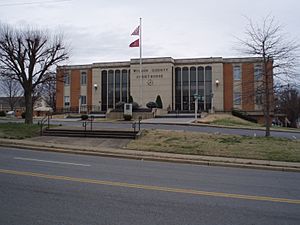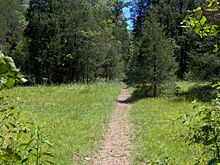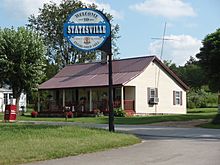Wilson County, Tennessee facts for kids
Quick facts for kids
Wilson County
|
||
|---|---|---|

Wilson County Courthouse in Lebanon
|
||
|
||

Location within the U.S. state of Tennessee
|
||
 Tennessee's location within the U.S. |
||
| Country | ||
| State | ||
| Founded | October 26, 1799 | |
| Named for | David Wilson, early statesman | |
| Seat | Lebanon | |
| Largest city | Mt. Juliet | |
| Area | ||
| • Total | 583 sq mi (1,510 km2) | |
| • Land | 571 sq mi (1,480 km2) | |
| • Water | 12 sq mi (30 km2) 2.1%% | |
| Population
(2020)
|
||
| • Total | 147,737 | |
| • Estimate
(2023)
|
163,674 |
|
| • Density | 253.41/sq mi (97.84/km2) | |
| Time zone | UTC−6 (Central) | |
| • Summer (DST) | UTC−5 (CDT) | |
| Congressional districts | 5th, 6th | |
Wilson County is a county in the U.S. state of Tennessee. It is in Middle Tennessee. As of the 2020 census, the population was 147,737. Its county seat is Lebanon. The largest city is Mt. Juliet. Wilson County is part of the Nashville-Davidson–Murfreesboro–Franklin, TN Metropolitan Statistical Area.
Contents
History
Wilson County was created in 1799 from a portion of Sumner County, and named for Major David Wilson, a Revolutionary War veteran and statesman. The county remained predominantly agrarian throughout the 19th century. The arrival of the railroad after the Civil War boosted the county's timber sector, and several large factories were constructed in the county during the early 20th century.
Wilson County was the site of an important saltpeter mine. Saltpeter, the main ingredient of gunpowder, was obtained by leaching the earth from Valley Cave. Valley Cave is near Statesville. The many saltpeter hoppers still inside the cave indicate that this was a large mining operation. These saltpeter vats may date from the War of 1812 mining era or the Civil War mining era, or perhaps both. Further research is needed to determine when this mine was active.
Geography
According to the U.S. Census Bureau, the county has a total area of 583 square miles (1,510 km2), of which 571 square miles (1,480 km2) is land and 12 square miles (31 km2) (2.1%) is water. The Cumberland River flows along the county's northern border with Trousdale and Sumner counties. This section of the river is part of Old Hickory Lake. Several streams in the western part of the county are part of the Stones River basin.
Wilson County is home to a large concentration of cedar glades, a unique ecosystem where the soil is too rocky or shallow for trees to grow. Many of these glades are found in Cedars of Lebanon State Park.
Adjacent counties
- Trousdale County (north)
- Smith County (northeast)
- DeKalb County (east)
- Cannon County (southeast)
- Rutherford County (south)
- Davidson County (west)
- Sumner County (northwest)
State protected areas
- Cedars of Lebanon State Forest
- Cedars of Lebanon State Park
- Couchville Cedar Glade State Natural Area (part)
- Gattinger's Cedar Glade and Barrens State Natural Area (part)
- John and Hester Land Cedar Glades State Natural Area
- Old Hickory Wildlife Management Area (part)
- Percy Priest Wildlife Management Area (part)
- Vesta Cedar Glade State Natural Area
- Vine Cedar Glade State Natural Area
Major highways
 I-40
I-40 I-840
I-840 US 70
US 70 US 70N
US 70N
 US 70 Bus.
US 70 Bus. US 231
US 231 SR 96
SR 96 SR 109
SR 109 SR 141
SR 141 SR 171
SR 171 SR 265
SR 265 SR 266
SR 266 SR 267
SR 267 SR 452
SR 452
Demographics
| Historical population | |||
|---|---|---|---|
| Census | Pop. | %± | |
| 1800 | 3,261 | — | |
| 1820 | 18,730 | — | |
| 1830 | 25,472 | 36.0% | |
| 1840 | 24,460 | −4.0% | |
| 1850 | 27,443 | 12.2% | |
| 1860 | 26,072 | −5.0% | |
| 1870 | 25,881 | −0.7% | |
| 1880 | 28,747 | 11.1% | |
| 1890 | 27,148 | −5.6% | |
| 1900 | 27,078 | −0.3% | |
| 1910 | 25,394 | −6.2% | |
| 1920 | 26,241 | 3.3% | |
| 1930 | 23,929 | −8.8% | |
| 1940 | 25,267 | 5.6% | |
| 1950 | 26,318 | 4.2% | |
| 1960 | 27,668 | 5.1% | |
| 1970 | 36,999 | 33.7% | |
| 1980 | 56,064 | 51.5% | |
| 1990 | 67,675 | 20.7% | |
| 2000 | 88,809 | 31.2% | |
| 2010 | 113,993 | 28.4% | |
| 2020 | 147,737 | 29.6% | |
| 2023 (est.) | 163,674 | 43.6% | |
| U.S. Decennial Census 1790-1960 1900-1990 1990-2000 2010-2020 |
|||
2020 census
| Race | Number | Percentage |
|---|---|---|
| White (non-Hispanic) | 118,889 | 80.47% |
| Black or African American (non-Hispanic) | 10,099 | 6.84% |
| Native American | 405 | 0.27% |
| Asian | 3,086 | 2.09% |
| Pacific Islander | 44 | 0.03% |
| Other/Mixed | 6,839 | 4.63% |
| Hispanic or Latino | 8,375 | 5.67% |
As of the 2020 United States census, there were 147,737 people, 51,618 households, and 40,874 families residing in the county.
2010 census
As of the census of 2010, there were 113,993 people, 42,563 households, and 32,177 families living in the county. The population density was 199.64 persons per square mile (77.08 persons/km2). The housing unit density was 74.54 units per square mile (28.78 units/km2). The racial makeup of the county was 89.30% White, 6.40% African American, 1.12% Asian, 0.35% Native American, 0.04% Pacific Islander, and 1.46% from two or more races. Those of Hispanic or Latino origins constituted 3.24% of the population.
Of all of the households, 33.22% had children under the age of 18 living in them, 60.08% were married couples living together, 4.33% had a male householder with no wife present, 11.19% had a female householder with no husband present, and 24.40% were non-families. 19.86% of households were one person and 7.29% were one person aged 65 or older. The average household size was 2.65 and the average family size was 3.03.
The age distribution was 25.06% under the age of 18, 62.78% ages 18 to 64, and 12.17% age 65 and older. The median age was 39.3 years. 51.02% of the population were females and 48.98% were males.
The median household income was $60,678, and the median family income was $70,092. Males had a median income of $49,293 versus $36,419 for females. The per capita income for the county was $27,814. About 5.6% of families and 7.6% of the population were below the poverty line, including 9.1% of those under the age of 18 and 8.1% of those age 65 and older.
Education
Wilson County Schools oversees 22 public schools, including 2 adult education centers and a technical education center. The county has five high schools: Mount Juliet High School, Lebanon High School, Wilson Central High School, Green Hill High School, and Watertown High School.
Lebanon Special School District (LSSD) serves most of Lebanon and some unincorporated areas for K-8, though some parts of Lebanon are with Wilson County schools for all years K-12. Wilson County Schools operates the high schools that serve the LSSD territory.
Cumberland University is located in Lebanon.
Communities
Cities
- Mt. Juliet (largest city)
- Lebanon (county seat)
Town
Census-designated places
Other unincorporated communities
- Belinda City
- Cainsville
- Cedar Grove
- Cherry Valley
- Commerce
- Doaks Crossroads
- Egan
- Gladeville
- Greenvale
- LaGuardo
- Leeville
- Liberty Hill
- Martha
- Norene
- Statesville
- Suggs Creek
- Tater Peeler
- Taylorsville
- Tuckers Crossroads
- Vine
Former community
Education
It has two school districts, Lebanon Special School District and Wilson County School District. The latter has all high school zoning in the entire county, while the former has grades K-8 and special education services.
Notable people
- Jordan Anderson (1825–1907) – author of Letter from a Freedman to His Old Master (1865)
- Casey Atwood (b. 1980) – NASCAR driver
- Adrian Belew (b. 1949) – musical artist
- Charlie Daniels (1936–2020) – musical artist
- Dan Evins (1935–2012) – businessman and founder of the Cracker Barrel Old Country Store
- Bobby Hamilton (1957–2007) – NASCAR driver
- Erika Jo (b. 1986) – musical artist
- Chloe Kohanski – musical artist
- Dixon Lanier Merritt (1879–1972) – newspaper editor, historian, poet
- John J. Pettus (1813–1867) – 20th and 23rd Governor of Mississippi
- John S. Roane (1817–1867) – 4th Governor of Arkansas
- David P. Sartor (b. 1956) – classical composer
- Gretchen Wilson (b. 1973) – musical artist
- Ross Winn (1871–1912) – writer
See also
 In Spanish: Condado de Wilson (Tennessee) para niños
In Spanish: Condado de Wilson (Tennessee) para niños





